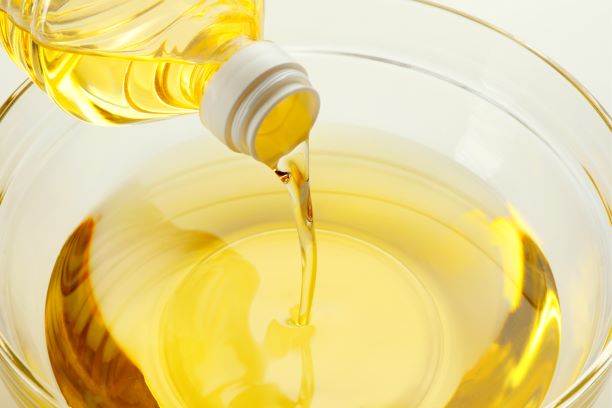
Frying oil
You will learn:
- Why doesn’t fresh oil smell like anything?
- Why products that are deep-fried in fresh oil get a more even shade?
- What is the ideal frying temperature for potato chips?
- How to achieve the ideal taste of fried foods?
Oil is the most important ingredient in the frying process. In addition to the resulting flavor of the product, it also affects the degree of roasting, the speed of the process and the fat content of the food.
The fact is that many food makers do not pay enough attention to it and forget it when they put it in the deep fryer. Heating the oil to high temperatures triggers a series of chemical reactions that significantly affect the taste of the food. First, the liquid molecules oxidize to form very active peroxide molecules. The unstable peroxides then react with other molecules in the oil, resulting in a number of substances that alter taste.
Many of these substances have a very strong aroma, which at the same time becomes the aroma of fried foods. But some substances have a very unpleasant odor, and in addition are harmful to health. The ratio of “pleasant and unpleasant substances” in the oil depends on how many products have been fried in it.
The oil in the newly opened container or bottle has almost no taste or smell, as the chemical reactions have not yet taken place.
Foods that fry in fresh oil more quickly get a more even brownish oil. Why?
The secret is very simple: oil and water do not mix. The vapor bubbles that evaporate from the product during frying are pushed to the surface of the food. In fresh oil, food is only 10% of the total time in direct contact with the oil. This is also reflected in the taste of the product – which chefs label as “weak”.
When used repeatedly, the oil undergoes a number of other chemical reactions, called hydrolysis. During this process, some fat molecules change their structure and separate. Products of such reactions include surfactants, also known as emulsifiers, which allow the mixing of water and oil.
The food, which is then fried in the used oil, spends up to half the time in direct contact with the product. Heat is transferred more actively, food quickly reaches a high temperature, the crust color is more saturated and the taste is deeper.
Unfortunately, the oil can remain in perfect condition for long. Reactions that occur in oil spoil it. The emulsifiers accumulate in the oil each time they warm up, and as a result the oil mixes so well with water that the food spends too much time in contact with the hot oil, causing it to burn. The fragments of fat molecules are polymerized, forming precipitates, causing the oil to coarse and coat the food.
The fact that the oil is no longer suitable for use can be recognized by the foam – air bubbles begin to “float” in the oil. Another feature is a smell that is similar to a fish smell (this is due to the fact that oxidation reactions have gone too far).
The chemical degradation of the oil reduces the ignition temperature and the formation of smoke, which can cause a fire from the ignition of the oil.
The color of potato chips depends directly on the frying temperature. They get a slightly golden tint when frying from 155 ° C to 170 ° C, no matter how long the product has been fried.
And now a little advice on how to achieve a tasty fried product while maintaining the proper properties of the oil. In order to achieve the effect of “used oil” it is enough to add a small amount of used oil to the fresh one.
Food soaks in oil up to (80%) only after fried food has been removed from the deep fryer. For the right taste, however, it is necessary to preserve some of the oil
NORMIT offers air knife technology that removes excess oil after deep-frying.
Normit has many years of experience in the production and sale of deep fryers for various types of products.
Normit company has a research and development center in Malacky and offers free advice on sales@normit.com or call +421 902 400 321
Comments are closed




